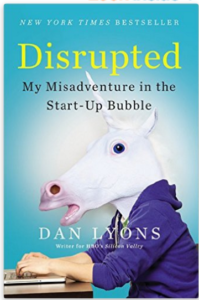One of the first things I have to do in my graduate digital marketing classes is undo the damage  created by HubSpot. HubSpot, which refers to itself as “a leading inbound marketing and sales platform,” insists that marketing = inbound marketing = digital marketing. That is wrong on so many levels.
created by HubSpot. HubSpot, which refers to itself as “a leading inbound marketing and sales platform,” insists that marketing = inbound marketing = digital marketing. That is wrong on so many levels.
First, marketing is far more than inbound marketing. Marketing starts with understanding the industry opportunity and target customers, then defining the right product and the right price for those customers. Only after that happens does marketing get to start playing in with communications and promotion. We have to find and train the right distribution channels, which may be direct or through third parties. We have to develop content: messaging and brochures and articles and videos and images. It’s only in this last big step that we get to distribute the content to our target markets (and measure success) through a variety of channels, some digital, some IRL: advertising (print, web, TV, radio, billboards, etc) and social media and search engines, etc.
Second, I have yet to find a company (other than a few very small consulting firms) that can thrive on inbound marketing alone. Even HubSpot has throngs of telemarketers cold calling businesses to sign up for their services. And after 10 years and an IPO, they still can’t turn a profit. http://finance.yahoo.com/q/ks?s=HUBS
Btw, there’s a fascinating new book out that provides an inside look at HubSpot: Disrupted by Dan Lyons, former Technology Editor at Newsweek. It’s a must read for anyone in marketing.
 Third, inbound marketing is not new. It’s just a catchy name for content development and PR, both of which have been around since the beginning of marketing. HubSpot did not invent these marketing activities. [Good luck trying to figure out the current Wikipedia entry on “The History of Marketing,” as someone recently edited it to start with the birth of digital marketing in the 1980’s. Pffft! Marketing communications dates back to the 1600’s, even earlier if you consider target market selection. After all, CavemanA had to pick the right CavemanB to convince of a trade: his piece of flint for their big stick.]
Third, inbound marketing is not new. It’s just a catchy name for content development and PR, both of which have been around since the beginning of marketing. HubSpot did not invent these marketing activities. [Good luck trying to figure out the current Wikipedia entry on “The History of Marketing,” as someone recently edited it to start with the birth of digital marketing in the 1980’s. Pffft! Marketing communications dates back to the 1600’s, even earlier if you consider target market selection. After all, CavemanA had to pick the right CavemanB to convince of a trade: his piece of flint for their big stick.]
- The first advertisement was in the Imperial Intelligencer in 1648.
- The first billboard ad was in 1835 advertising a circus.
- The first magazine ad appeared in Harper’s Magazine in 1864.
- The first radio ads were run on WEAF by Hawthorne Court Apartments in 1922.
Kudos certainly are due to HubSpot for their clever branding around the whole inbound marketing concept. That plays nicely into the communication channels we now have ready access to thanks to the Internet. But there are more feature-rich and robust tools for creating an inbound marketing program: blogs (WordPress, for instance), emails (I like Campaign Monitor and MailChimp), surveys (can’t beat the price of SurveyMonkey), analytics (Google Analytics has cornered the market), social media (I like SproutSocial), etc.
I understand that HubSpot might be attractive to small business owners that don’t really understand marketing or have time to research what else is available.
But let’s be clear: Marketing DOES NOT = Inbound Marketing. Marketing is far more.



